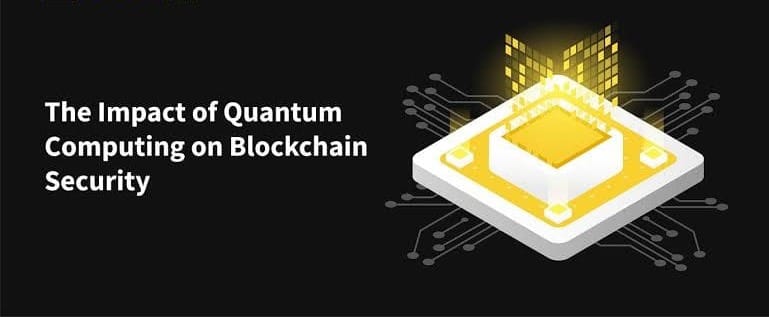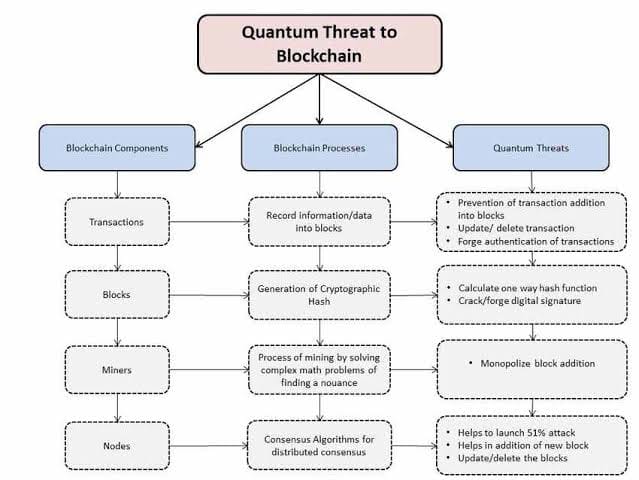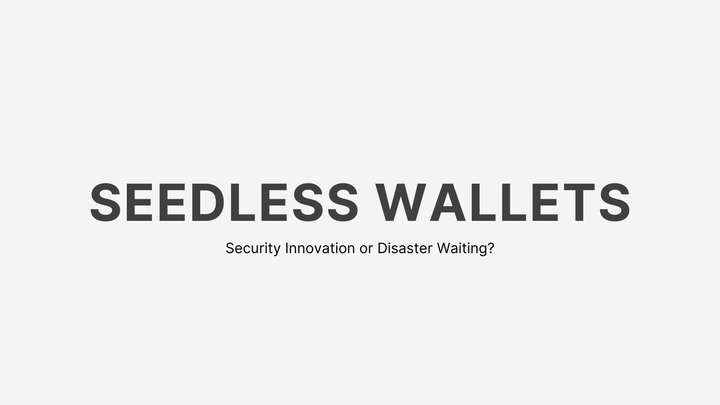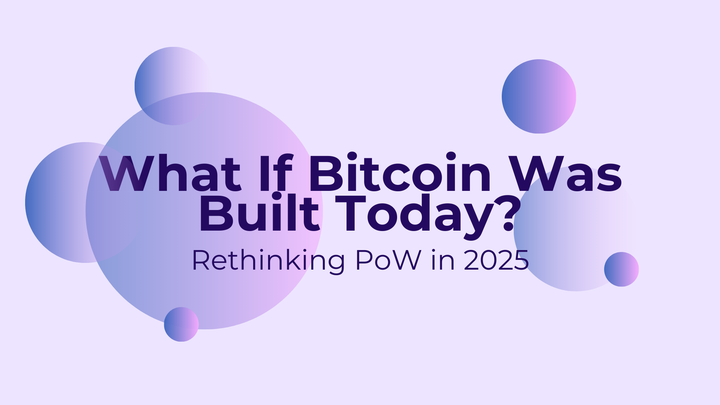The Significant Impact of Quantum Computing in Securing the Blockchain

Imagine a world where your bank account, your digital identity, and every cryptocurrency transaction you’ve ever made could be cracked open like a cheap padlock. Now picture a fortress so impregnable that even the most advanced supercomputers can’t touch it. This is the double-edged sword of quantum computing technology that could both threaten and revolutionize the security of blockchain, the decentralized ledger powering Bitcoin, Ethereum, and the dream of a trustless future.
Blockchain’s promise lies in its cryptographic backbone, a system of mathematical locks that keep transactions secure and tamper-proof. But quantum computers, with their mind-bending ability to solve complex problems at unprecedented speeds, could pick those locks or forge entirely new ones. As quantum technology creeps closer to reality, the blockchain world is at a crossroads: adapt or risk obsolescence. In this deep dive, we’ll explore how quantum computing could upend blockchain security, the threats it poses, and the cutting-edge solutions being developed to keep the decentralized revolution safe. Grab a coffee; this is going to be a thrilling ride.
The Blockchain’s Cryptographic Fortress
To understand quantum computing’s impact, let’s first unpack how blockchain stays secure. At its core, a blockchain is a distributed ledger where transactions are grouped into blocks, linked chronologically, and validated by a network of nodes. What makes it unhackable (so far) is cryptography specifically, two types of algorithms:
- Hash Functions: These are one-way mathematical functions that take an input (like a transaction) and produce a fixed-length output (a hash). Think of it as a meat grinder: you can toss in a steak and get ground beef, but you can’t turn the beef back into a steak. Bitcoin uses SHA-256, a hash function that’s computationally infeasible to reverse, ensuring blocks are tamper-proof.
- Public-Key Cryptography: This involves a pair of keys a public key (like a bank account number) and a private key (like a PIN). The private key signs transactions, proving ownership without revealing itself. Ethereum and Bitcoin rely on the Elliptic Curve Digital Signature Algorithm (ECDSA), which uses the mathematical complexity of elliptic curves to make guessing a private key from a public key practically impossible.
These cryptographic tools create a fortress around blockchain. To break SHA-256 or ECDSA with today’s computers would take billions of years longer than the universe’s lifespan. But quantum computers? They’re a different beast entirely.
Quantum Computing: The Game-Changer
Quantum computers aren’t just faster versions of your laptop. They operate on principles of quantum mechanics, using qubits instead of bits. While a classical bit is either 0 or 1, a qubit can be 0, 1, or both simultaneously (thanks to superposition). Add in entanglement where qubits are linked across distances and quantum computers can process vast numbers of possibilities at once.

For certain problems, this gives quantum computers exponential speedups. In 2019, Google’s Sycamore quantum processor solved a specific task in 200 seconds that would’ve taken a supercomputer 10,000 years. While that task was niche, it hinted at quantum’s potential. Fast-forward to 2025, and companies like IBM, Quantinuum, and China’s Origin Quantum are pushing toward “quantum advantage” where quantum computers outperform classical ones for practical problems.
So, how does this threaten blockchain? Two quantum algorithms are the culprits:
- Shor’s Algorithm: This algorithm can factor large numbers and solve discrete logarithm problems exponentially faster than classical computers. For blockchain, it could derive a private key from a public key, breaking ECDSA. If you have someone’s public key (visible in every Bitcoin transaction), a quantum computer running Shor’s algorithm could steal their funds.
- Grover’s Algorithm: This reduces the time needed to search unstructured data, like reversing a hash function. For SHA-256, Grover’s algorithm cuts the search time from 2^256 to 2^128 operations not enough to break it outright but enough to weaken security, especially for mining or brute-forcing passwords.
The good news? We’re not there yet. Current quantum computers have 50–400 qubits, plagued by errors and noise. Breaking ECDSA requires thousands of fault-tolerant qubits, likely a decade or more away. But the blockchain world can’t afford to wait quantum’s shadow looms large.
The Threat to Blockchain: A Closer Look
Let’s break down how quantum computing could disrupt blockchain security and why it matters.

1. Compromising Private Keys
Public-key cryptography is blockchain’s Achilles’ heel. Every Bitcoin or Ethereum address is tied to a public key, which is derived from a private key using ECDSA. If a quantum computer runs Shor’s algorithm, it could reverse-engineer the private key from the public key in minutes. This would let attackers:
- Steal funds from any address with an exposed public key (e.g., addresses used in transactions).
- Forge signatures to create fake transactions.
- Undermine trust in decentralized systems, tanking crypto markets.
Bitcoin’s unspent transaction outputs (UTXOs) are particularly vulnerable. As of 2025, about 20% of Bitcoin’s supply is in addresses with exposed public keys due to early wallet designs or user errors. A quantum attack could drain these funds overnight.
2. Weakening Hash Functions
Hash functions like SHA-256 secure blockchain’s integrity. Miners use them to solve computational puzzles (proof-of-work), and hashes link blocks together. Grover’s algorithm doesn’t break SHA-256 outright but reduces its effective security to 128 bits. This could:
- Make it easier for quantum miners to dominate proof-of-work, centralizing networks like Bitcoin.
- Increase the risk of collision attacks, where two different inputs produce the same hash, potentially allowing block tampering.
While less catastrophic than Shor’s algorithm, this still erodes blockchain’s trustless foundation.
3. Smart Contract Vulnerabilities
Ethereum’s smart contracts—self-executing code for DeFi, NFTs, and more rely on ECDSA for authentication. A quantum attack could let hackers drain DeFi pools or manipulate NFT ownership. In 2024, DeFi protocols held over $100 billion in locked value; a quantum breach could cause economic chaos.
4. Long-Term Data Risks
Blockchains are immutable, meaning past transactions are permanently public. Even if we upgrade to quantum-resistant cryptography, historical data remains vulnerable. A “store-now, decrypt-later” attack could see adversaries archive blockchain data today and crack it when quantum computers mature.
The stakes are high. A quantum breach could collapse crypto markets, disrupt supply chains, and erode trust in decentralized systems. But the blockchain community isn’t sitting idly by solutions are already in the works.
Post-Quantum Cryptography: The Shield Against Quantum Threats
To counter quantum computing, researchers are developing post-quantum cryptography (PQC) algorithms believed to resist quantum attacks. These fall into several categories:
- Lattice-Based Cryptography: Based on hard math problems involving geometric lattices, these are the frontrunners for PQC. Algorithms like Kyber and Dilithium are efficient and secure against both classical and quantum attacks.
- Code-Based Cryptography: Relies on error-correcting codes, like the McEliece algorithm. It’s been around since the 1970s and is highly resistant but requires large key sizes.
- Multivariate Quadratic Cryptography: Uses systems of quadratic equations, like Rainbow, for signatures. It’s compact but less studied.
- Hash-Based Signatures: These, like Lamport signatures, rely solely on hash functions, making them quantum-resistant but limited to one-time use per key pair.
In 2022, the U.S. National Institute of Standards and Technology (NIST) began standardizing PQC algorithms, finalizing Kyber and Dilithium in 2024. These are now being tested for blockchain integration.
Blockchain’s Quantum-Resistant Future: Strategies and Progress
Transitioning to quantum-resistant blockchains is a massive undertaking, but the crypto world is mobilizing. Here’s how:
1. Upgrading Cryptographic Algorithms
Blockchains must replace ECDSA and SHA-256 with PQC algorithms. Ethereum and Bitcoin are exploring this, but it’s tricky:
- Bitcoin: As a proof-of-work chain, Bitcoin could adopt hash-based signatures like Lamport or lattice-based schemes. A 2023 BIP (Bitcoin Improvement Proposal) suggested integrating Dilithium for signatures, but it requires a soft or hard fork. Soft forks preserve backward compatibility; hard forks risk splitting the network.
- Ethereum: Ethereum’s flexibility makes it easier to adopt PQC. The Ethereum Foundation is researching lattice-based cryptography for signatures and zero-knowledge proofs (used in Layer 2 rollups). A 2025 roadmap includes testing Kyber for wallet security.
The challenge? PQC algorithms often have larger key sizes and slower performance. Dilithium signatures, for example, are 2–3 KB versus ECDSA’s 70 bytes. This bloats blockchain data, raising storage and bandwidth costs. Optimizations, like signature aggregation, are being explored.
2. Quantum-Resistant Layer 2 Solutions
Layer 2 protocols, like Arbitrum and zkSync, are ideal for testing PQC. Zero-knowledge rollups already use quantum-resistant math (e.g., STARKs in StarkNet), as zero-knowledge proofs are inherently robust against quantum attacks. By 2026, most Ethereum Layer 2s plan to support PQC signatures, shielding DeFi and NFTs from quantum threats.
3. Hybrid Cryptography
To ease the transition, some propose hybrid systems combining classical and PQC algorithms. For example, a wallet could use ECDSA and Dilithium signatures simultaneously, ensuring security even if one fails. This buys time until quantum computers are a clear threat.
4. Protecting Historical Data
To counter “store-now, decrypt-later” attacks, blockchains could use commit-reveal schemes. Users commit a hash of their transaction data to the blockchain, revealing the full data only when needed. This obscures public keys, reducing exposure. Ethereum’s EIP-4844 (2024) introduced data blobs for this purpose.
5. Quantum-Safe Mining
For proof-of-work chains, Grover’s algorithm could give quantum miners an edge. Alternatives like proof-of-stake (used by Ethereum since 2022) or quantum-resistant consensus mechanisms (e.g., lattice-based proofs) are being studied. Cardano’s Ouroboros protocol is exploring PQC integration for staking.
6. Community and Industry Efforts
The blockchain ecosystem is rallying:
- QRL (Quantum Resistant Ledger): Launched in 2018, QRL uses hash-based signatures and is fully quantum-resistant. It’s a niche chain but a proof-of-concept for others.
- Hyperledger: This enterprise blockchain framework is testing PQC for supply chain and finance use cases.
- Crypto Exchanges: Binance and Coinbase are funding PQC research to secure user wallets.
- Governments: NIST’s standards are guiding blockchain upgrades, while China’s 2025 quantum roadmap prioritizes PQC for its CBDC.
In 2024, the Ethereum Foundation hosted a “Quantum Resistance Hackathon,” awarding $1M for PQC solutions. These efforts show the industry’s urgency.
Beyond Defense: Quantum Computing’s Positive Impact
Quantum computing isn’t just a threat—it could supercharge blockchain:
- Faster Consensus: Quantum algorithms could optimize proof-of-stake or Byzantine fault tolerance, speeding up transaction finality.
- Enhanced Privacy: Quantum cryptography, like quantum key distribution (QKD), could enable unhackable communication for blockchain nodes. China’s Micius satellite tested QKD in 2017, hinting at future applications.
- Smart Contract Optimization: Quantum computers could solve complex optimization problems for DeFi yield farming or supply chain logistics, encoded in smart contracts.
- Zero-Knowledge Proofs: Quantum-resistant ZK-proofs, already used in Layer 2, could become even more efficient, enabling private, scalable blockchains.
These benefits are speculative but show quantum’s potential to be a boon, not just a bane.
Challenges in Going Quantum-Resistant
The road to quantum-resistant blockchains isn’t smooth:
- Performance Trade-Offs: PQC algorithms are slower and bulkier, straining nodes and wallets. Lightweight solutions are needed for mobile users.
- Network Upgrades: Hard forks risk community splits, as seen in Bitcoin Cash’s 2017 fork. Convincing miners and users to upgrade is tough.
- Interoperability: PQC must work across Layer 1, Layer 2, and sidechains. Standardizing algorithms is critical.
- Cost: Upgrading infrastructure wallets, nodes, dApps will cost billions. Smaller chains may struggle.
- Timing: Move too early, and you burden the network with unneeded complexity. Move too late, and you’re vulnerable. Experts estimate 2030–2035 for fault-tolerant quantum computers, but surprises could accelerate this.
Despite these hurdles, proactive planning is non-negotiable.
Real-World Implications
Quantum computing’s impact on blockchain extends beyond crypto:
- Finance: DeFi platforms handling $200B in 2025 must adopt PQC to protect user funds. A quantum breach could trigger a global financial crisis.
- Supply Chain: Blockchain tracks goods from farm to table. Quantum attacks could forge records, disrupting food safety or luxury goods markets.
- Healthcare: Blockchain secures patient data. A quantum hack could expose sensitive records, violating privacy laws like HIPAA.
- Governance: Blockchain-based voting systems, piloted in Estonia, rely on cryptography. Quantum threats could undermine democratic trust.
The ripple effects demand action now.
The Road Ahead: A Quantum-Secure Blockchain
Quantum computing is a wake-up call for blockchain. The threat is real, but so is the opportunity. By embracing post-quantum cryptography, blockchains can not only survive but thrive in a quantum world. The transition will take years, requiring collaboration across developers, researchers, and governments. But the crypto community has a knack for solving hard problems Bitcoin itself was once a crazy idea.
As we stand in 2025, the clock is ticking. Projects like QRL, Ethereum’s PQC roadmap, and NIST’s standards are lighting the way. Meanwhile, quantum computing’s potential to enhance blockchain through faster consensus, better privacy, and smarter contracts adds a silver lining.
The blockchain fortress isn’t crumbling; it’s evolving. Quantum computing may be the ultimate stress test, but it’s also a chance to build a stronger, more resilient decentralized future. Whether you’re a crypto hodler, a DeFi degan, or just curious about the tech, one thing’s clear: the quantum revolution is coming, and blockchain is gearing up to meet up.



Comments ()